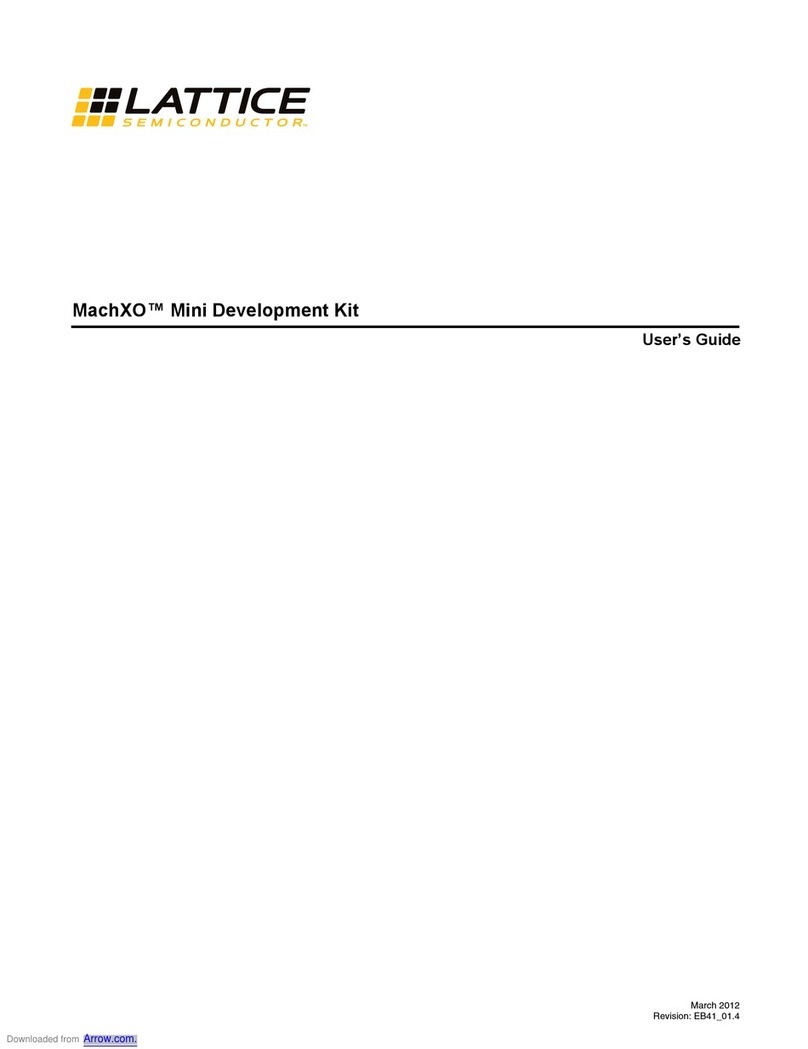Lattice Semiconductor LatticeMico GPIO User manual
Other Lattice Semiconductor Computer Hardware manuals
Lattice Semiconductor
Lattice Semiconductor MachXO2 Series User manual
Lattice Semiconductor
Lattice Semiconductor CrossLink-NX User manual
Lattice Semiconductor
Lattice Semiconductor CrossLink-NX User manual
Lattice Semiconductor
Lattice Semiconductor iCE40 UltraLite Parts list manual
Lattice Semiconductor
Lattice Semiconductor CrossLink-NX ISP Demo User manual
Lattice Semiconductor
Lattice Semiconductor Avant-E User manual
Lattice Semiconductor
Lattice Semiconductor CrossLink-NX User manual
Lattice Semiconductor
Lattice Semiconductor iCE40 UltraLite User manual
Lattice Semiconductor
Lattice Semiconductor LatticeMico32 User manual

Lattice Semiconductor
Lattice Semiconductor MachXO User manual
Lattice Semiconductor
Lattice Semiconductor mVision AR0234 User manual
Lattice Semiconductor
Lattice Semiconductor ECP5 Versa User manual
Lattice Semiconductor
Lattice Semiconductor sysCLOCK ECP5 Parts list manual
Lattice Semiconductor
Lattice Semiconductor LatticeMico8 User manual
Lattice Semiconductor
Lattice Semiconductor CertusPro-NX Parts list manual
Lattice Semiconductor
Lattice Semiconductor iCE40 SPRAM Series Instruction Manual
Popular Computer Hardware manuals by other brands

Toshiba
Toshiba TOSVERT VF-MB1/S15 IPE002Z Function manual

Shenzhen
Shenzhen MEITRACK MVT380 user guide

TRENDnet
TRENDnet TEW-601PC - SUPER G MIMO WRLS PC CARD user guide

StarTech.com
StarTech.com CF2IDE18 instruction manual

Texas Instruments
Texas Instruments LMH0318 Programmer's guide

Gateway
Gateway 8510946 user guide

Sierra Wireless
Sierra Wireless Sierra Wireless AirCard 890 quick start guide

Leadtek
Leadtek Killer Xeno Pro Quick installation guide

Star Cooperation
Star Cooperation FlexTiny 3 Series Instructions for use

Hotone
Hotone Ampero user manual

Connect Tech
Connect Tech Xtreme/104-Express user manual

Yealink
Yealink WF50 user guide















